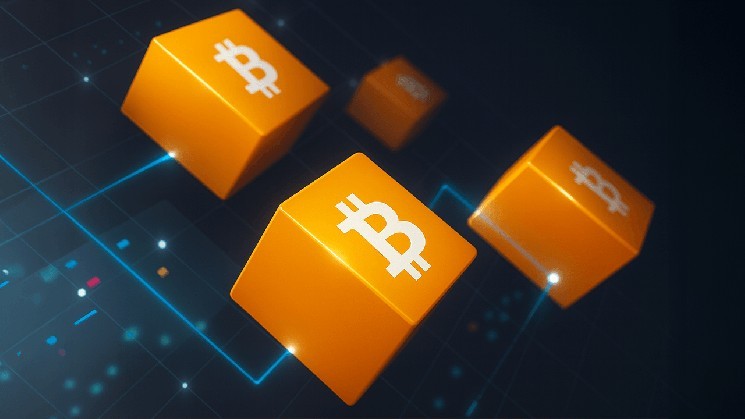From Satoshi to Foundry: The Titans of Hash Behind 910,000 BTC Blocks

Since its inception on January 3, 2009, the Bitcoin network has processed more than 910,000 blocks, with nine prominent mining collectives accounting for 48.78% of these discoveries. Below, we outline the ten key players that have collectively contributed to mining 673,848 blocks—nearly 75% of all blocks generated since Bitcoin’s creation.
Bitcoin’s Blockchain Architects: Ten Key Contributors
In Bitcoin’s infancy, mining occurred independently, with participants leveraging varying levels of computational power as hardware transitioned from CPUs to GPUs and modern ASICs. By late 2010, Marek Palatinus, commonly known as Slush, introduced the first public BTC mining pool, initially called Slush Pool and later rebranded as Braiins Pool.
This overview examines the foremost mining organizations, their block discovery counts, and the stakeholders shaping their operations.
1. Anonymous Miners (25.25% / 229,922 blocks)
This group encompasses unidentified miners whose details are absent from coinbase data, including Satoshi Nakamoto, early adopters, and other enigmatic participants active during Bitcoin’s dawn. Though most blocks predate formalized pooling, sporadic contributions from unknown sources persist, albeit dwindling over time.
2. Antpool (11.00% / 100,178 blocks)
Antpool remains one of the most enduring and sizable mining collectives. Formerly a Bitmain subsidiary, it now operates independently while retaining affiliations with the firm. Consistently a top source of Bitcoin’s computational power, it currently ranks second in hashrate behind Foundry USA.
3. F2pool (10.15% / 92,382 blocks)
Established in China in 2013 under the name Discus Fish, F2pool has evolved into a major multi-cryptocurrency mining hub. It continues to play a significant role in Bitcoin’s ecosystem while extending its reach to other digital assets.
4. Foundry USA (6.39% / 58,175 blocks)
Founded in 2020 under Foundry Digital (a Digital Currency Group subsidiary), this North American pool capitalized on regional mining expansion and institutional adoption. While fourth historically in blocks mined, it currently leads the sector in hashrate, recently contributing 32.42% of the network’s computational power.
5. ViaBTC (5.16% / 47,014 blocks)
Introduced in May 2016 by Haipo Yang, ViaBTC gained rapid recognition for its groundbreaking payment models like PPS+ and compatibility with 20+ cryptocurrencies. Boasting 1.7 million users globally, it maintains top-tier hashrate rankings.
6. Braiins Pool (4.53% / 41,283 blocks)
Pioneered by Marek Palatinus in late 2010 as Slush Pool, this collective revolutionized mining through shared hashrate systems and predictable rewards. Now recognized for transparency and protocols like Stratum V2, it remains vital to decentralized mining practices.
7. BTC Guild (3.62% / 32,935 blocks)
Operating from 2011 under Michael Marsee, BTC Guild dominated early Bitcoin mining, occasionally exceeding 40% network control. Despite empowering smaller miners, regulatory challenges and market shifts prompted its closure in 2015.
8. Poolin (3.07% / 27,911 blocks)
Launched in 2017 by ex-Btc.com leaders, Poolin ascended to global prominence through multi-chain support and intuitive features. Though its 2022 liquidity struggles diminished its standing, its peak-era impact endures.
9. Ghash.io (2.54% / 23,083 blocks)
Managed by CEX.IO, Ghash.io dominated mid-2010s mining, briefly exceeding 50% hashrate in 2014 and sparking centralization debates. Despite reduced influence post-2016 closure, its legacy persists in Bitcoin’s narrative.
10. Binance Pool (2.30% / 20,965 blocks)
Debuting in April 2020 under Binance, this pool leveraged its exchange’s infrastructure to become a major hashrate contender. Offering FPPS payments and dual mining/staking services, it exemplifies modern mining’s corporate integration.
Power Dynamics in Bitcoin’s Mining Evolution
The shifting concentration of mining power reflects both foundational influences and future governance risks. As institutional entrants overshadow legacy players, the tension between decentralization and centralization intensifies. Mining’s behind-the-scenes transformations could decide whether Bitcoin upholds its trustless ethos or succumbs to new hierarchies.
Each mined block encapsulates technological progress, strategic maneuvering, and ideological clashes. From pseudonymous innovators to enterprise-driven pools, Bitcoin’s blockchain chronicles relentless competition. While open participation persists, the uneven accumulation of influence implies decentralized ideals may coexist with fluctuating power structures, challenging assumptions about equitable distribution.
Source: cryptonews.net



